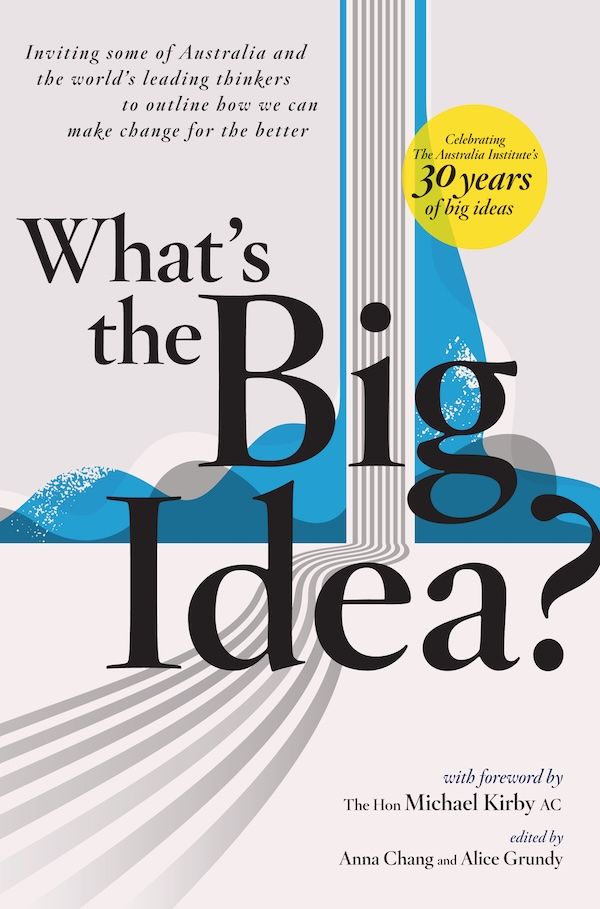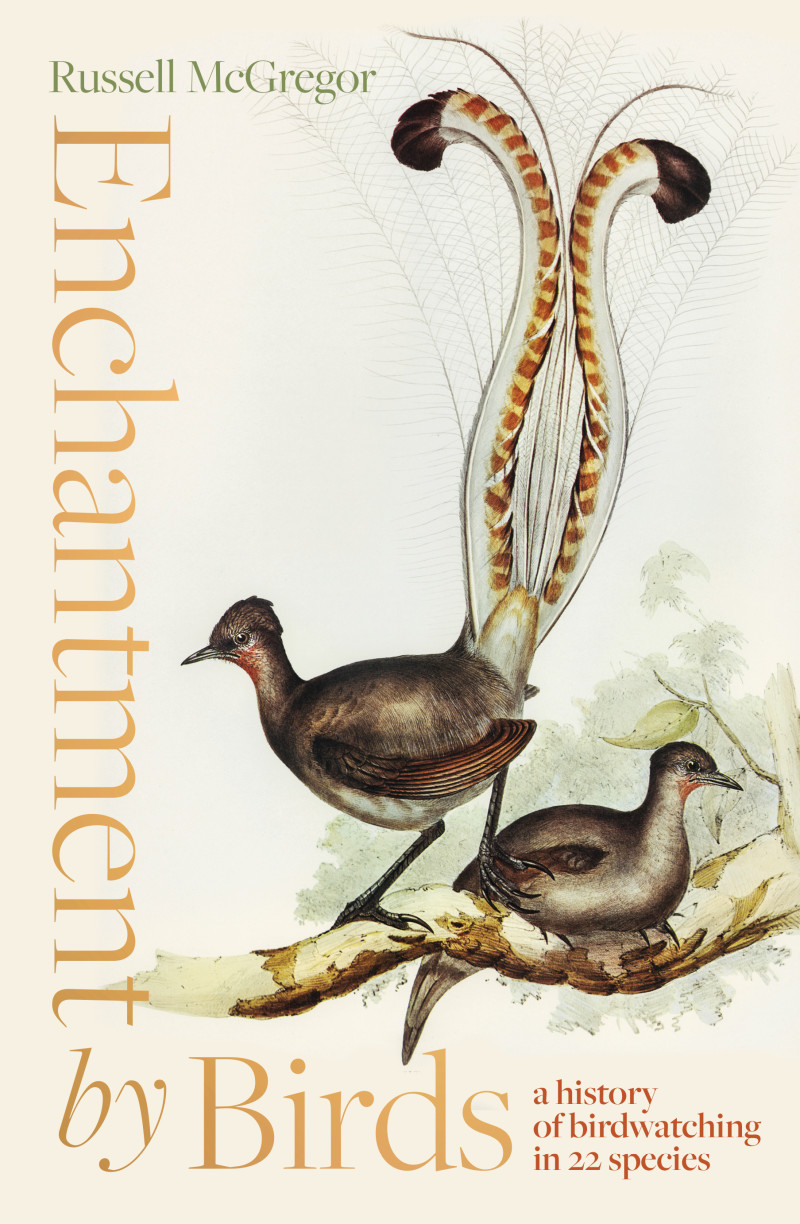Packaging White
The way that books are presented has changed from the time when Patrick White’s Happy Valley first appeared in 1939. Humphrey McQueen charts the progress.
If before the 1890s, books had been judged by their dust jackets, most would have been considered uniformly dull, or indecently attired.
Dust jackets appeared first in 1833 to protect the recently introduced cloth casings as they made their progress from printery to publisher’s warehouse, on to booksellers and then to library shelves, at which stage the wrappings were usually thrown away. Those earliest dust jackets could be blank or printed with the title as well as the names of the author and publisher on the front, or notices about other volumes on the back panel.
Many jackets continued to be blank scraps, or transparent glassine, until the start of this century when the wrappers became another part of the expanded sales effort transforming the marketing of all commodities. Blurbs appeared shortly before the Great European War.
According to Charles Rosner’s 1949 catalogue for a Victoria and Albert Museum exhibition on ‘The Art of the Book’, the next step came during the 1920s with the elevation of the dust jacket into a work of art for which illustration and typography had to be matched.
The illustrators’ attention moved from the text to the covers. Just as reputable engravers such as Dore had illustrated books, so, in the 1920s, an artist as established as Sir William Orpen designed the jacket of H.G. Wells’s latest novel for a fee of two hundred guineas. When the publishers lost the original, Orpen got a second fee for the replacement, thereby earning more than many novelists can still expect from their labours.
Patrick White began to publish during what has been called the golden age of dust-jacket design and the changes apparent on his covers, as well as the differences between British and US American presentations, offer one path through the publishing world since the 1930s. They also allow us to compare the ways in which Australia’s two great and powerful friends have visualised a writer whose settings have been mostly as foreign to them as his style and concerns were to his fellow Australians.
In 1935, when Patrick White privately published a limited edition of his book of verse, The Ploughman, the jacket’s rear panel and spine were left blank. Above conventional lettering for the title and author, the cover carried an enlarged version of one of the images in which L. Roy Davies had depicted the settings if not the mood of White’s poems. Any cover illustration was still a daring touch.
Four years later Harrap published Happy Valley using sensible black and white lettering on a blue jacket, with notices for other writers on the back. Reprinting in the same month brought forth brown letters on fawn paper. Front and back panels now carried quotations extolling White’s achievement from a distinguished list of writers including Graham Greene, Elizabeth Bowen, Stephen Spender, Howard Spring, Herbert Read and V.S. Prichett. The first printing had summarised the plot on the front flap above a brief biographical note in minute type. The reprint expanded the author’s career onto the back flap, stressing that he had attended a good school, Cheltenham, before going up to Cambridge.
The US American first edition of Happy Valley came from Viking in 1940 with white and black letters on a brick-coloured panel set into a green landscape for the front and spine. The rear panel paraphrased the plot and cited critical enthusiasms, as did the front flap. Viking’s potted biography omitted the name of White’s school and university, but explained that he had worked on a ‘sheep ranch’ and had twice visited the USA.
The Living and the Dead appeared first in the USA in a jacket executed by E. McKnight Kauffer, one of the most esteemed designers of our century. The colour range was limited to purple, grey and sky blue with white relief. At first glance, the front looks as if it has no illustration, only typography. But the lettering is arranged to form a crucifix, with the words ‘AND THE DEAD’ standing out from the slightly angled crossbar. Four stars suggest a southern cross.
A sharp contrast between the British and US American responses came from The Aunt’s Story in 1948. Doubtless at White’s suggestion, Routledge and Kegan Paul used a black-and-white illustration of ‘The Garden’, a neo-Vorticist painting by Roy de Maistre to whom Happy Valley had been dedicated. The front flap carried the first publisher’s photograph of White as well as his hand-crafted biographical note where we learn that after reading Modern Languages at Cambridge, he ‘decided for writing and against sheep’. This potted self-portrait foreshadows White’s notorious 1957 Essay ‘The Prodigal Son’.
Viking’s front panel for The Aunt’s Story appears trivial. The title and author’s name are set in boxes linked by black lines to three childlike drawings, against a yellowy-green background, like a New Yorker cover during a printer’s strike. The panel again related the complexities of White’s fictions to Virginia Woolf. Previous promotions had mentioned Lawrence, Eliot, Joyce and Proust. Now, the name of Dostoyevsky appeared on a White blurb. Appreciation of White’s reception remains incomplete without paying attention to these promotions.
Although he remained with Viking in New York to the end of his life, White again changed his British publishers to Eyre and Spottiswoode for The Tree of Man in 1956, and for the last time to Jonathan Cape for The Vivisector in 1970. If you are anxious to know if disputes over cover designs played any part in these shifts, you too will by now be deep in David Marr’s biography.
The British jacket on The Tree of Man was an illustration by Don Finley, showing a man overshadowed by what are more or less gum trees. The Viking cover, on the other hand, was overladen with symbols. Neither came close to White’s capacity for conveying the metaphysical through the mundane.
Voss (1957) saw the first of the Sydney Nolan covers. The title, in a dirtied yellow, stood out against the gathering storm of blue sky while the pen-and-ink figure of the protagonist stared at nothing; and everything. The rear panel repeated this combination of colours but with only the author’s name emblazoned. Variations of Nolan’s evocative sketch of Voss appeared on all Penguin editions between 1960 and the early 1980s, when a larger format was disgraced by a bearded profile in a silly hat, one of the consequences of the Nolan-White brawl.
Despite their good sales in Australia, all the Penguin editions had been imported from Great Britain. Nonetheless, the first version of Voss appeared with two different prices printed on the front cover, 5/- for Britain and 7/6 for Australia, instead of having the antipodean price stuck over the British one. A Penguin Modern Classics edition in 1963 carried the company logo between crossed boomerangs.
Less successful than the Nolan simplicity was George Salter’s design for the Viking edition of Voss which took up two elements from the narrative – the letters and the Aborigines – though in a way that intimated the shattering uncertainty between the characters. Salter’s attempt should not have given prospective buyers any wrong ideas about the world White was inviting them to enter.
An abstracted Nolan landscape in browns and bleached blues wrapped around the British Riders in the Chariot (1961). This time, Salter had more success with the front panel of the Viking, showing a section of a sun-moon high above a green and red patch of hell in the lower left comer. The words were set against a sky saturated with blue. Salter’s attempt to reduce the storyline to a cartoon spoilt the rear panel.
Desmond Digby’s cover for The Solid Mandala (1966) conveyed the mysteries of the Brown twins while the US edition again seemed ill at ease with anything other a literal depiction of one tiny element, in this case Arthur’s glorious marbles.
One other minor change arrived with the British edition of The Solid Mandala when the list of White’s novels no longer included Happy Valley. His first published novel continued to be mentioned in the US editions until The Eye of the Storm, eight years later.
For The Vivisector (1970) – dedicated to Cynthia and Sydney Nolan – White’s newest British publisher, Jonathan Cape, risked allowing a painting by Tom Adams to compete with those of Hurtle Duffield.
The Penguin Vivisector has retained a John Brack image, ‘Still Life with Self Portrait’, though on the more recent and king-sized editions this work has been shown with only its sides trimmed instead of with the top and bottom sliced off as well.
Viking took the safer course with a novel about a visionary painter by reverting to the kind of jacket prevalent in the nineteenth century, using only the essential information, as they were to do for The Cockatoos (1975).
The Eye of the Storm (1973) from Cape had an ideal work from one of White’s favourite artists, Desmond Digby, to whom White dedicated A Fringe of Leaves. Digby’s work on the jacket of the Viking Four Plays (1966) is equally apposite. The Viking edition of The Eye of the Storm came out only with words, as would its Flaws in the Glass (1982). In the meantime, The Twyborn Affair had appeared with author and title separated from the frequent US American identification of the work as ‘A Novel’ by no more than a butterfly.
Cape’s A Fringe of Leaves (1979) was the last new work by White to carry a Nolan painting, this time from his Mrs Fraser series. Viking did their worst ever with a jacket painted by Cornelia Gray who, like André Brink in his novel An Instant in the Wind, transposed the events to the coast of Africa.
Reversion to jackets carrying only typography – albeit of almost regal textures – overtook the British editions of White’s last three books, The Twyborn Affair (1979), Flaws in the Glass (1981) and Memoirs of Many in One (1986). The Cape designer added a small androgynous-looking bust to The Twyborn Affair, but no decoration or image of any kind to White’s self-portrait or to Memoirs.
For this final long work, the US edition used an entirely inappropriate female face heavily made-up with symbolism. One continuing weakness in the US designers, apart from McKnight Kauffer, has been this compulsion to be obvious about what the texts were at pains to reveal tangentially.
If lovers of literature, not to mention scholars, are to glean from dust jackets ever more insights about the changing self-image of authors and shifts in how their audiences have been encouraged to perceive them, librarians will have to abandon their bad habit of throwing the wrappers out with the rubbish.









Leave a comment
If you are an ABR subscriber, you will need to sign in to post a comment.
If you have forgotten your sign in details, or if you receive an error message when trying to submit your comment, please email your comment (and the name of the article to which it relates) to ABR Comments. We will review your comment and, subject to approval, we will post it under your name.
Please note that all comments must be approved by ABR and comply with our Terms & Conditions.